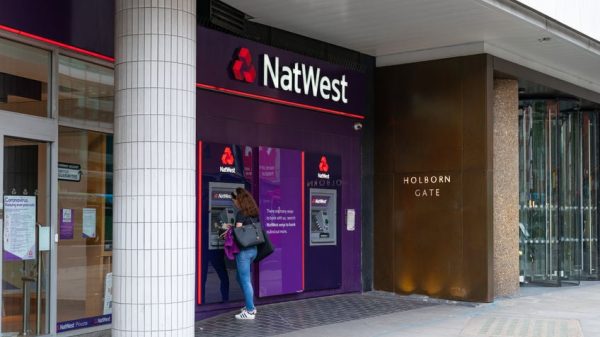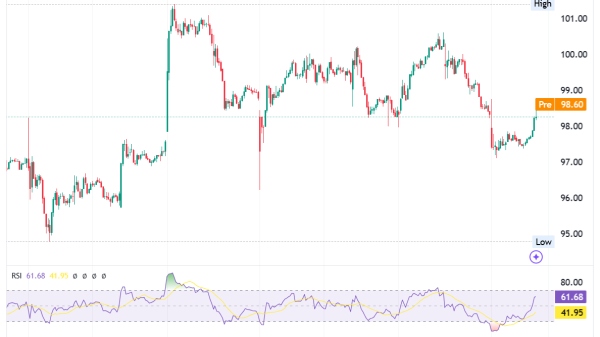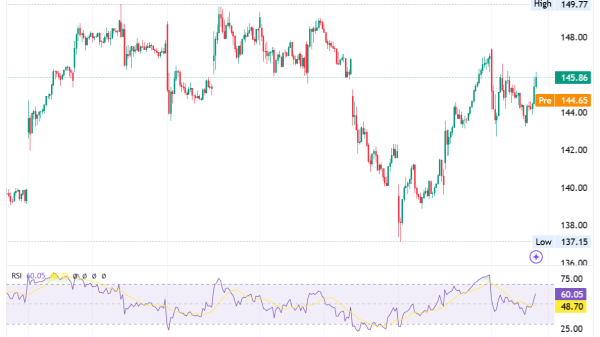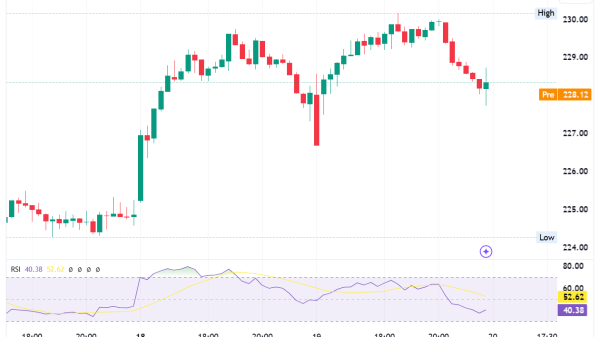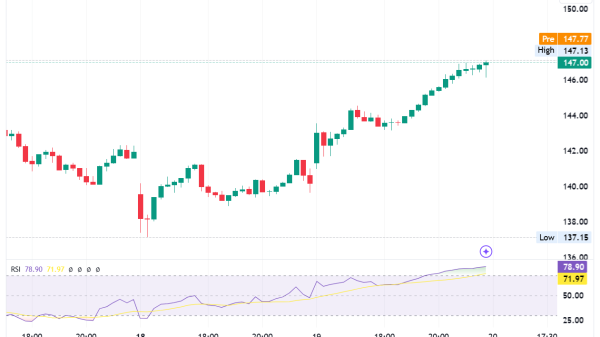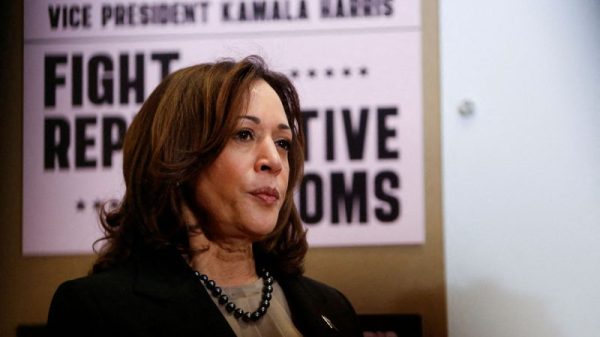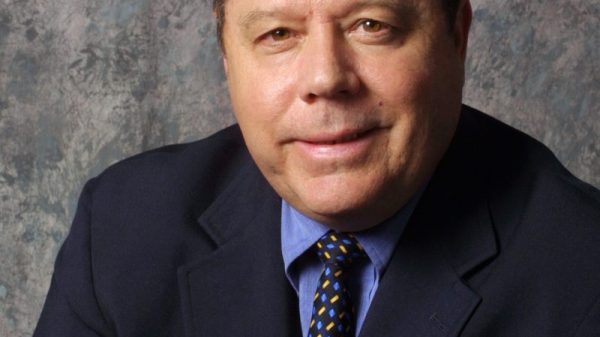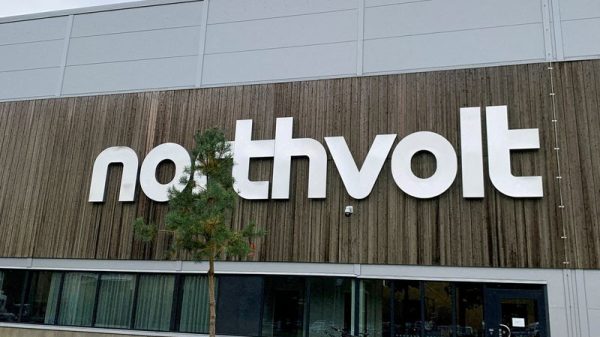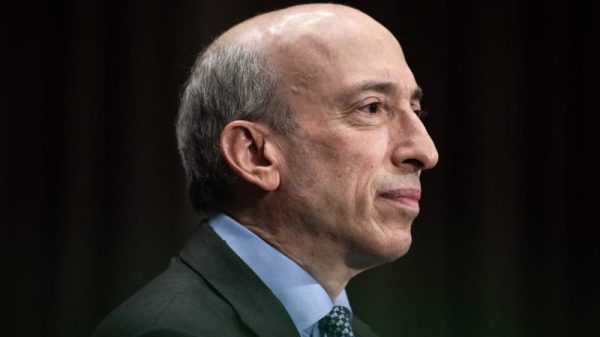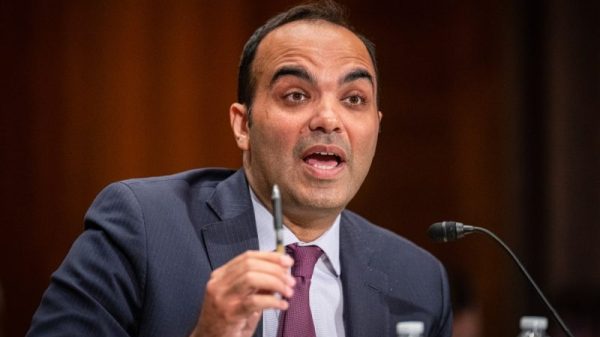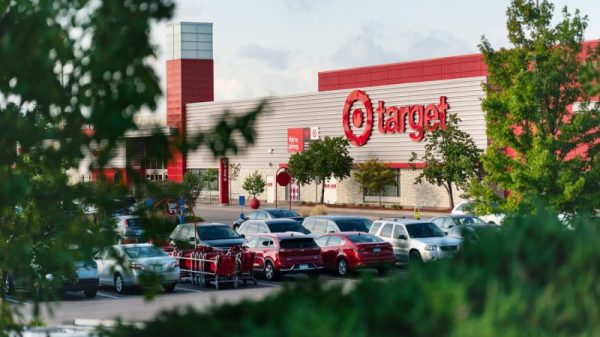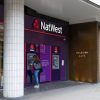
Amerant Bancorp (NASDAQ: NYSE:AMTB), the Coral Gables-based banking institution, reported a third-quarter loss of $48.2 million during its earnings call on October 21, 2024. The loss was primarily due to a strategic repositioning of the company’s investment portfolio and losses on real estate owned. Despite the loss, Amerant Bancorp saw core pre-provision net revenue remain strong and total assets increase. The company is focusing on growth and community support following recent hurricanes, while also preparing for the opening of new banking centers in Florida.
Key Takeaways
- Amerant Bancorp reported a Q3 loss of $48.2 million, driven by portfolio repositioning and real estate losses.
- Core pre-provision net revenue stood at $31.3 million, with total assets increasing to $10.38 billion.
- Gross loans rose to $7.56 billion, and total deposits increased to $8.11 billion.
- The company completed a public offering of 8.7 million shares, raising $165 million.
- Amerant is actively working on expanding in Florida and enhancing its international banking operations.
Company Outlook
- The company is focused on supporting communities affected by Hurricanes Helene and Milton.
- Amerant is aiming to enhance liquidity and fee income through asset management growth.
- New banking centers are expected to open in Miami Beach and downtown Tampa by mid-2025.
- Management targets a 60% efficiency ratio, 1% return on assets, and 12% return on equity by the second half of 2025.
Bearish Highlights
- The net interest margin decreased slightly to 3.49%.
- Noninterest income was reported at a negative $47.7 million due to investment portfolio losses.
- The diluted loss per share was $1.43, compared to a profit in the previous quarter.
Bullish Highlights
- The sale of the Houston franchise is expected to close soon with a net gain.
- The company is expanding its presence in Florida with new banking centers.
- Amerant is focusing on alternative funding sources to positively impact the cost of funds into 2025.
Misses
- The company’s allowance for credit losses dropped to $79.9 million, a 15.4% decrease.
- Nonperforming loans rose to 152 basis points.
- Total noninterest expenses rose to $76.2 million, primarily due to OREO expenses and professional fees.
Q&A Highlights
- Deposit betas are projected to be around 40 to 45 basis points due to the composition of interest-bearing deposits.
- The company is actively growing both domestic and international assets under management.
- Management expects a normalized charge-off rate of 30 to 40 basis points by 2025, with a temporary increase in the fourth quarter.
Amerant Bancorp’s earnings call revealed a mixed financial picture as the company navigates strategic changes and external challenges. While the reported loss reflects the short-term costs of repositioning, the bank is taking steps to solidify its long-term growth, particularly through expansion in Florida and strengthening international banking operations. The management remains committed to achieving significant financial targets and improving stakeholder value in the coming years.
InvestingPro Insights
Amerant Bancorp’s recent financial performance and strategic moves can be further contextualized with data from InvestingPro. Despite the reported Q3 loss, the company’s market capitalization stands at $870.51 million, reflecting investor confidence in its long-term prospects.
The bank’s revenue growth is a bright spot, with a 16.85% increase in quarterly revenue as of Q2 2024. This aligns with management’s focus on expansion and growth initiatives mentioned in the earnings call. However, investors should note that Amerant is trading at a high earnings multiple, with a P/E ratio of 34, which may indicate market expectations for future growth.
InvestingPro Tips highlight that Amerant has been profitable over the last twelve months, which provides some reassurance despite the recent quarterly loss. Analysts predict the company will remain profitable this year, supporting management’s optimistic outlook for reaching their financial targets by 2025.
It’s worth noting that Amerant’s stock price has fallen significantly over the last three months, with a -21.29% total return. This decline could be related to the recent quarterly loss and portfolio repositioning costs. However, the 1-year price total return remains positive at 23.05%, suggesting longer-term investor confidence.
For readers interested in a more comprehensive analysis, InvestingPro offers additional tips and insights beyond what’s covered here. In fact, there are 5 more InvestingPro Tips available for Amerant Bancorp, providing a deeper dive into the company’s financial health and market position.
Full transcript – Amerant Bancorp Inc Class A (AMTB) Q3 2024:
Operator: Greetings, and welcome to the Amerant Third Quarter 2024 Earnings Conference Call. [Operator Instructions] As a reminder, this call is being recorded. I would now like to turn the call over to Laura Rossi, Head of Investor Relations and Strategy, Amerant Bank. Thank you, Laura. You may begin.
Laura Rossi: Thank you, Paul. Good morning, everyone, and thank you for joining us to review Amerant Bancorp’s Third Quarter 2024 Results. On today’s call are Jerry Plush, our Chairman and CEO; and Sharymar Calderon, our Executive Vice President and CFO. As we begin, please note that discussions on today’s call contain forward-looking statements within the meaning of the Securities Exchange Act. In addition, references will also be made to non-GAAP financial measures. Please refer to the company’s earnings release for a statement regarding forward-looking statements as well as for information and reconciliation of non-GAAP financial measures to GAAP measures. I will now turn it over to our Chairman and CEO, Jerry Plush.
Jerry Plush: Thank you, Laura. Good morning, everyone, and thank you for joining us today to discuss Amerant’s third quarter 2024 results. But before we go through our financial results this quarter, I want to take a moment to acknowledge the devastating impact that Hurricanes Helene and Milton have had on so many people and businesses. Our thoughts and prayers are with those who are affected by these storms, including our team members, customers and partners. We are committed to supporting our communities during this difficult time, and we are working diligently to provide assistance and resources to those in need. I’m pleased to report that our Tampa area facilities were spared from any significant damage. Our team members are all okay, and they are back to working with our customers. So now we’ll move on to quarter results. I’d like to address upfront that this quarter, given our strategic decision to reposition the investment portfolio in conjunction with our successful capital raise in late September, the company recorded a substantial charge to earnings as expected, leading to the loss of $48.2 million we recorded for the quarter. Excluding the losses from the securities repositioning as well as the write down on other real estate owned, which we’ll cover in detail shortly, our core pre-provision net revenue was strong at $31.3 million. Note that results were also impacted by an elevated level of provision expense, which, while comparable to the second quarter, was necessary to address certain nonperforming loans in the quarter, again, as we previously disclosed. Otherwise, our core business demonstrated strong performance, highlighted by solid organic loan and deposit growth, continued improvement in net interest income and stability in the net interest margin. Shary will review these components in greater detail in just a few minutes. So let’s start with the balance sheet on Slide 3. And here, you can see that we officially crossed the $10 billion mark as total assets reached $10.38 billion as of the close of the third quarter, an increase over the $9.75 billion in the second quarter. Our cash and cash and equivalents increased $361.5 million to $671.8 million compared to just $310.3 million in the second quarter of ’24. Our total investments remained relatively unchanged at $1.54 billion. You’ll notice when Shary covers investments in greater detail in a few minutes, the significant improvement in AOCI from 2Q ’24, which resulted from the combination of improved valuations throughout the quarter and what was realized at quarter end due to the investment portfolio repositioning. Our total gross loans increased by $239.1 million to $7.56 billion from the $7.32 billion in the second quarter, all driven by organic loan growth. The loan pipeline is strong here in the fourth quarter as we’ve already closed on approximately $123 million in loan production in the fourth quarter, and we expect to end the quarter with approximately $400 million to $450 million in total production. Our total deposits increased by $294.9 million to $8.11 billion compared to $7.82 billion in the second quarter as organic deposit growth continues to be strong. You’ll note that we increased Federal Home Loan Bank advances by $150 million as we continue to position our balance sheet and execute on prudent asset liability management by adding some duration to our funding. Our total capital ratio as of the third quarter was 12.66% compared to 11.88% at the end of the second quarter. And our CET1 was 10.6% compared to 9.6%. But please note that we expect our CET1 to be at approximately 11.2% after we close on the Houston transaction in early November and that will remain above 11% in 2025 as projected earnings support growth. You’ll note that our tangible equity ratio was up to 8.48%, which includes the AOCI I just referenced, resulting from the after-tax change in the valuation of our AFS investment portfolio. And then lastly, as of the third quarter, our Tier 1 capital ratio was 11.31% compared to 10.34% as of the second quarter. We’ll turn now to take a look at the income statement on Slide 4. And again, here’s the diluted loss per share for the third quarter was $1.43 compared to $0.15 in diluted income per share in the second quarter. This again was primarily due to the losses recorded in the securities during the quarter and the other real estate owned loss recorded as previously noted. Our net interest margin was 3.49% in the third quarter compared to 3.56% in the second quarter. The decrease in margin resulted primarily from higher average balances in NPLs, along with higher average balances in interest-bearing liabilities. Our net interest income, however, was $81 million. It was up $1.6 million from the $79.4 million we recorded in the second quarter, and that’s primarily driven by higher loan balances during the quarter. Our provision for credit losses was $19 million, down slightly from $19.2 million in the second quarter. Improving credit quality continues to be a major area of focus for us, and I’ll cover more on this in my closing remarks. Our noninterest income decreased to negative $47.7 million, primarily due to the repositioning of the securities portfolio. Our noninterest income, however, excluding the securities losses, was $20.8 million. Our noninterest expense increased to $76.2 million, and that’s inclusive of the nearly $6 million in REO valuation expense. And our pre-provision net revenue was a loss of $42.9 million compared to PPNR of $25.5 million in the second quarter of ’24. However, PPNR, excluding non-routine items in noninterest income and expense was $31.3 million, as I previously referenced, compared to the $31 million we recorded in the second quarter. You’ll also note that both noninterest income and noninterest expense include a $1.6 million impact from the unwinding of a swap in connection to the sale of a nonperforming loan. So if we exclude this item, both noninterest income and noninterest expense are more in line with what we guided to last quarter. We’ll turn now to Slide 5, and I’ll cover a few other items. So you’ll note first that we completed our public offering of 8,684,210 shares in Class A voting common stock at a price to the public of $19 a share, and this all occurred on September 27, ’24. This also included 784,210 shares issued upon the exercise in full of the underwriters of their option to purchase additional shares. So the total gross proceeds from the offering were approximately $165 million, and net proceeds approximately $155.8 million. We paid our quarterly cash dividend of $0.09 per common share on August 30, 2024, and our Board of Directors just approved a quarterly dividend of $0.09 per share payable on November 29, 2024. We are working on increasing our sources of liquidity. And as such, our borrowing capacity at the end of the quarter with either the Fed or the Federal Home Loan Bank was $1.6 billion. But of note, as of October 21, 2024, after the transfer of additional loan collateral, our borrowing capacity has increased to $2.6 billion. And lastly, our assets under management increased $98.7 million to $2.6 billion, driven primarily by market valuations and net new assets. We believe this is a great area of opportunity for us to look to grow fee income on a go-forward basis. You’re going to note on Slide 6, we reintroduced the slide we had previously to provide some details around our updated share count post transaction. So here, you can see we issued approximately 8.7 million shares, which brought total shares outstanding at the close of the third quarter to 42,103,623 shares, of which approximately 3 million are nonvoting shares. So at this point, I’m going to turn things over to Shary to cover metrics next and get into the financials in greater detail. Shary?
Sharymar Calderon: Thank you, Jerry, and good morning, everyone. I’ll begin today by discussing our key performance metrics and their changes compared to last quarter on Slide 7. The ratio of noninterest-bearing deposits to total deposits decreased slightly to 18.3% from 18.7% in the second quarter. Aligned with guidance shared in our past earnings call, net interest margin was 3.49% in the third quarter compared to 3.56% in the second quarter. As Jerry just mentioned, this is the result of higher average balances in NPLs paired with higher average balances in interest-bearing deposits and cost of funds. Our efficiency ratio was 228.74% in the third quarter compared to 74.21% in the second quarter as a result of the negative $68.5 million in noninterest income related to securities losses as well as the $5.7 million OREO valuation expense we recorded during the third quarter. Our ROA and ROE this quarter were negative 1.92% and negative 24.98% compared to 0.21% and 2.68%, respectively, in the second quarter. These decreases were primarily driven by the non-routine items I just mentioned. Lastly, the coverage of the allowance for credit losses to total loans decreased to 1.15% compared to 1.41% in the second quarter, mainly due to $35.6 million in charge-offs, of which $17.3 million had been reserved in previous periods. Continuing on to Slide 8, I’ll discuss our investment portfolio, which is one of the areas with the most significant updates this quarter. Following the capital raise, the company executed on the previously announced investment portfolio repositioning, which resulted in proceeds of $551 million and consisted of the sales of securities with an average yield of 3.2%, including a portion of the $220 million in securities previously designated as held to maturity, all securities with yields below 2.75% and all corporate debt securities, including bank sub debt. Prior to quarter end, we transferred all held to maturity to held for sale and sold all subordinated debt. The remaining securities subject to the repositioning were adjusted through net realized losses to a new basis until sold in early October 2024. When compared to the prior quarter, the duration of the investment portfolio decreased to 4.9 years as the model anticipated higher prepayments due to lower rates. We expect duration to settle around 5 years once the reposition is complete, assuming rates stay unchanged. The chart on the upper right shows the expected prepayments and maturities of our investment portfolio for the next 12 months, which represents a liquidity source available to support growth and higher interest-earning assets. Moving on to the rate composition of our portfolio, you can see that the floating portion increased to 14.3% compared to the second quarter. We expect to continue to add fixed rate securities in 4Q as we continue positioning the balance sheet for a decreasing rate environment. Also note that as a result of the securities repositioning that started at the end of September, we have derisked our AFS portfolio, which as of quarter end had approximately 90% of government guarantees, while the remainder was rated investment grade. Once the reposition is completed, this percentage will be approximately 100%. Continuing on to Slide 9, let’s talk about the loan portfolio. At the end of the third quarter, total gross loans were $7.56 billion, up $239.1 million or 3.3% compared to $7.32 billion at the end of 2Q. Like in prior quarters, this increase was all organic relationship-driven growth. The single-family residential portfolio was $1.6 billion in the third quarter, an increase of $125.4 million compared to $1.5 billion in the second quarter. This amount includes loans originated during the quarter, primarily done with private banking customers and commercial clients with residential income-producing properties as collateral. Consumer loans as of the third quarter were $278.4 million, a decrease of $18 million or 6.1% quarter-over-quarter. This portfolio includes $103.9 million in higher-yielding indirect loans purchased prior to 2022 as a tactical move to increase yields. Contractually, the portfolio will mostly run off by the first quarter of 2026, although prepayment speeds indicate that the runoff would be during 2025. Moving on to Slide 10. Here, we show our CRE portfolio in greater detail. We have a conservative weighted average loan-to-value of 58% and debt service coverage of 1.3x, as well as strong sponsorship tier profile based on AUM, net worth and years of experience for each sponsor. As of the end of the third quarter, we had 29% of our CRE portfolio in top-tier borrowers. We have no significant tenant concentration in our CRE retail loan portfolio as the top 15 tenants represent 20% of the total. Major tenants include recognized national and regional grocery stores, pharmacy, food and clothing retailers, and banks. Turning to Slide 11, let’s take a closer look at credit quality. Here, you can see the allowance for credit losses at the end of the third quarter was $79.9 million, a decrease of 15.4% from $94.4 million at the close of the second quarter. The reserve levels provide sufficient coverage for the credit exposures. Our nonperforming loans to total loans are up to 152 basis points compared to 138 basis points last quarter, which I will cover in detail in the next slide. Nonperforming assets totaled $129.4 million at the end of the third quarter, an increase of $8.3 million compared to the second quarter, primarily due to the increase in nonperforming loans detailed in the next slide. The ratio of nonperforming assets to total assets was 125 basis points, down 1 basis point from the second quarter. In the third quarter of 2024, the coverage ratio of loan loss reserves to nonperforming loans closed at 0.7x, down from 0.9x at the end of the second quarter. Now moving on to Slide 12, which shows the drivers of the allowance for credit losses. At the end of the third quarter, the allowance was $79.9 million, a decrease of $14.5 million or 15.4% compared to $94.4 million at the close of the second quarter. The provision for credit losses was $19 million in the third quarter. Excluding reserves for commitments, the provision was $17.9 million and was comprised of $14.7 million to cover charge-offs, $2.3 million due to loan composition and growth, and $0.9 million due to credit quality and macroeconomic projection updates. During the third quarter of 2024, there were net charge-offs of $35.6 million, of which $17.3 million was provisioned in the previous period, $6.2 million related to a commercial loan in Florida, $3 million related to purchased consumer loans, $5.1 million related to a commercial Houston-based loan, of which $1.5 million was provisioned in the prior quarter, and $5.5 million were related to multiple retail and business banking loans. This was offset by $3.2 million in recoveries. Please note, we decided to fully charge off the aforementioned Houston-based credit this quarter given longer-than-anticipated litigation and will book recoveries as they occur. Turning to Slide 13, we show the roll forward of special mention loans from the second quarter to the third quarter and provide color on the main drivers of these changes. Special mention loans decreased by $19 million, primarily driven by 3 owner-occupied loans and 1 commercial loan totaling $18.2 million in loans previously in special mention, which were further downgraded to substandard, $3.3 million in payoffs and $2.9 million in upgrades. These decreases were partially offset by 1 relationship with 4 owner-occupied loans in Florida totaling $5.5 million in newly downgraded loans to special mention. Turning to Slide 14, we show the roll forward of nonperforming loans from the second quarter to the third quarter and provide color on the main drivers of these changes. The increase in nonperforming loans you see on this slide was primarily due to the $18.2 million in downgrades from special mention discussed earlier and mainly by 6 commercial loans and owner-occupied loans and 2 CRE totaling $55.6 million. These increases were offset by $35.6 million in charge-offs, $33.6 million in note sales and $3.2 million in paydowns, payoffs and other smaller changes. Note sales included 1 owner-occupied loan totaling $28 million and 2 small real estate secured loans. All notes were sold at par. The downgrades were not concentrated in a specific industry or geography. Moving on to Slide 15. We continue to have a well-diversified deposit mix composed of domestic and international customers. Domestic deposits, which account for 68% of our total deposits, totaled $5.6 billion as of the end of the third quarter, up by $271.4 million or 5.1% compared to the second quarter. International deposits, which account for 32% of total deposits, totaled $2.6 billion, also up $23.5 million or 0.9% compared to the second quarter. Total time deposits for the quarter were $2.4 billion, an increase of $92.9 million from the second quarter due to an increase in brokered time deposits of $1.6 million as well as an increase of $91.3 million in customer CDs. Our core deposits, defined as total deposits excluding all time deposits, were $5.7 billion as of the end of the third quarter, an increase of $202 million compared to the second quarter. The $5.7 billion in core deposits included $2.4 billion in interest-bearing deposits, up $72.6 million versus the second quarter; $1.8 billion in savings and money market deposits, up $112.5 million versus the second quarter; and $1.5 billion in noninterest-bearing demand deposits, up $16.9 million versus the second quarter. Next, I’ll discuss net interest income and net interest margin on Slide 16. Net interest income for the third quarter was $81 million, up $1.6 million or 2.1% compared to the second quarter. The increase was primarily driven by higher average balances on total interest-earning assets, primarily on loans and securities available for sale, and lower average rates in deposits. The increase in net interest income was partially offset by lower average rates on total interest-earning assets, primarily on securities available for sale and deposits with banks; higher average balances in money markets, FHLB advances, brokered time deposits and customer CDs; and higher average rates on FHLB advances. In terms of our deposit beta, we observed a quarterly beta of almost 0 this period as the Fed started to cut interest rates late in the quarter. As rates are expected to continue moving downward, we also expect our beta to pick up as we will be prompt to adjust interest-bearing accounts to ease our cost of funding. Moving on to interest rate sensitivity on Slide 17, you can see the asset sensitivity of our balance sheet with 52% of our loans having floating rate structures and 57% repricing within a year. We continue to position our loan portfolio for a change in rate cycle by incorporating rate floors when originating adjustable rate loans. We currently have 48% of our adjustable loan portfolio with floor rates. Additionally, you can see here that within the variable rate loans, 37% are indexed to SOFR. Our net interest income sensitivity profile to changes in interest rates is slightly higher, primarily due to higher levels of cash on the balance sheet when compared to the second quarter. We also show here the sensitivity of our available-for-sale portfolio to changes in interest rates. We expect the repositioning of the investment portfolio to help in a rate-down scenario as we will have less floating investments and more fixed. In terms of the impact of interest rates in AOCI, you may recall that this account was negative $108 million as of the second quarter. Prior to the repositioning, it had improved as a result of interest rate projections. You can see how AOCI is now down to $18 million, resulting from the combination of the prior improvement in valuations and the repositioning of the portfolio. Additionally, you can see expected further organic improvement in AOCI if monetary policy changes and interest rates continue to decrease in 2025 as is expected. We will continue to actively manage our balance sheet to best position our bank for the upcoming period. Turning to Slide 18. Noninterest income was negative $47.7 million as a result of the net loss recorded on the investment portfolio repositioning initiated during the quarter. Excluding non-routine items, noninterest income was $20.8 million compared to noninterest income of $19.4 million in 2Q ’24. The company also recorded an additional $8.3 million pretax loss in October due to changes in market values from quarter end to the time of the sale. Please note that the combined after-tax loss of September and October sales is in line with guidance we previously provided. Additionally, noninterest income reflects $1.6 million resulting from the unwinding of a swap related to the sale of a nonperforming loan. This effect of $1.6 million is reflected in both noninterest income and noninterest expense discussed in the next slide. The decrease in noninterest income was partially offset by higher loan level derivative income due to new contracts. Turning to Slide 19. Third quarter noninterest expenses were $76.2 million, up $2.9 million or 3.96% from the second quarter. The quarter-over-quarter increase was primarily driven by an increase in OREO due to a $5.7 million valuation expense recorded during the quarter, an increase in professional fees, an increase in loan level derivative expenses primarily due to the unwinding of the swap previously mentioned, and higher compensation costs due to higher average FTEs this quarter compared to Q2. The increase in noninterest expense was partially offset primarily by the absence of $1.3 million in valuation expense we had in Q2, resulting from the transfer of the Houston loans from the held-for-investment category to held-for-sale category, and lower advertising expenses compared to the second quarter. In terms of our team, we ended this quarter with 735 FTEs, which is higher than the 720 we had in the second quarter. We added to our business development team again this quarter as part of our growth initiatives. Moving on to Slide 20, we show the elements that contributed to the change in the EPS this quarter. We reported third quarter diluted loss per share of $1.43 on net loss of $48.2 million compared to diluted EPS of $0.15 on $5 million net income in the previous quarter, which was primarily driven by the net impact of the non-routine items associated with the repositioning of the investment portfolio and the OREO valuation expense. I’ll now give some color of our expectations for the fourth quarter. We expect NIM to be slightly higher from 3Q results closer to mid-3.50s. Regarding core noninterest income, we expect it to be approximately $17.5 million to $18 million. We expect operating expenses to remain at approximately $68.5 million, inclusive of new team members onboarded as part of our growth plan, offset by reduction in expenses due to the Houston franchise sale. Finally, we expect provision for credit losses to be around $8 million to $9 million next quarter as we do expect asset growth, as I previously mentioned, so at least $5 million of this amount would be related to growth in the quarter depending on asset mix, with the remainder being related to macroeconomic factor updates resulting from the generic reserves model. We are focused primarily on achieving the 60% efficiency ratio, 1% ROA and 12% ROE targets we established for ourselves. With the capital raise completed, the investment portfolio repositioned and the team in place, we have positioned the company to reach such levels in the second half of 2025. I will now pass it back to Jerry for closing remarks.
Jerry Plush: Thanks, Shary. So before we move to Q&A, I’d like to briefly comment on where we are on a number of topics. So first, regarding the sale of our Houston franchise, we’re scheduled to close on November 8, at which time the premium from the sale will be recognized as income, and that will be net of final investment banking and legal expenses. We project those final expenses to be around $1.25 million. And please note that a significant portion of this net gain, however, will be offset by the loss of $8.3 million on the sale of securities that Shary mentioned that occurred in the first several days of October. Next, regarding our continued expansion in Florida, we just signed a letter of intent for a second banking center in Miami Beach as well as for our second Tampa region location. This one is located in downtown Tampa. And we just received OCC approval on the downtown Tampa location, and we will be filing our application for approval on the second Miami Beach location shortly. Both would be expected to open by mid-2025. We also recently announced the hiring of a new Market President for Broward County. This is a key new position for the company. And this position will oversee Amerant’s ongoing expansion in the Broward market. Also note that we continue to actively recruit for additional relationship officers throughout South Florida and the greater Tampa marketplace. We also just announced an organization change to move international banking out separately from our consumer banking business to add even more focus on this important part of our business going forward. Our loan and deposit production during the third quarter was strong and the loan pipeline for 4Q, as I previously mentioned, is aligned with our previous guidance of 10% plus annualized growth. I mentioned this again in my earlier comments, but as always, funding all of this projected loan growth with our deposits-first focus remains our top priority. Regarding credit quality, we continue working on prudent and effective resolution of our special mention and nonperforming loans. At the end of this month, we expect to have NPLs down $7.4 million to $107.5 million without additional charges and special mention loans will be down $15.3 million to $61.1 million. Please note, we’re continuing to work diligently to have significant reductions in both special mention and nonperforming loans by the end of the fourth quarter. And to wrap things up and conclude, from here on out, it’s all about execution. So with that, I’m going to stop here. Shary and I will look to answer any questions you have. Paul, please open the line for Q&A.
Operator: [Operator Instructions] Our first question is from Russell Gunther with Stephens.
Russell Gunther: I wanted to first start on the loan growth expectations, really strong result this quarter, and Jerry, I appreciate the comments for 4Q. Could you just share with us any incremental color in terms of the drivers of growth, whether the mix is expected to be the same? And as we think out into 2025, weighing new hires, the macro environment, what type of growth rate you might expect?
Jerry Plush: Yes. No. I think it’s really a function as we’ve talked, Russell, over these last couple of calls that we’ve continuously added to the team. I think if you were to look at the additions we’ve made really across the board, so whether it’s on the private bank side, the commercial real estate side, the C&I side, we’ve added — there’s been quality additions throughout. And it’s pretty evenly spread when you think about the different counties. You probably note in my comments, I tried to bring up more and more specifically what will happen in Palm Beach, where we’ve added folks, or Broward, where we just announced the new Market President and then all the additions we’ve had in Tampa, it’s not to minimize. We’ve obviously continued to add here in Miami-Dade. I think you’re now seeing in the production, the strength and the quality of the personnel we’ve been adding, which is really the biggest driver, right? We add incremental people. Shary and I’ve talked about this in prior calls. When you add these folks who’ve got great relationships, know the right sponsors, been doing the business for quite some time, it’s just really a function of the incremental volume we get from each of these additions to staff.
Russell Gunther: I appreciate it, Jerry. And then maybe switching gears to the margin, Shary, I appreciate the guide for the coming quarter. Maybe building off the last question, if you guys could share sort of where commercial loan yields are coming on. And then as we look beyond 4Q and contemplate additional Fed easing, could you just share where you expect the margin to head in the early innings of 2025 and what your kind of rate cut and deposit beta assumptions would assume?
Sharymar Calderon: Yes, sure, Russell. So to address the question on the NIM, more on the short-term side, I think there are elements up and down within that NIM. We have new production coming in between 7.5% to 8% right now. We expect to have an improvement in the NIM due to the securities repositioning. We expect to have the redeployment of the NPLs into interest-earning assets. So the faster that happens, the better for the NIM. And we also have the repricing of the interest-bearing liabilities as rates go down. All of that is partially offset by the repricing of the variable rate loans, of course. But when we look at the contributions to the margins of these — of those other items, we see an expansion of the NIM to the mid-3.50s this quarter and somewhere between 3.55% and 3.60% for the first half of 2025.
Russell Gunther: Okay. Great. Really helpful. And then just last one for me. Jerry, you mentioned in the prepared remarks, you’ll be stripping out international banking to focus [indiscernible] highlight the importance of that. Can you just share any incremental thoughts around the strategic initiatives there?
Jerry Plush: Yes. I think it’s important to note that we’ve not really spoken a lot about this. And it’s really going to become more and more of another source, right, so to speak, as we – I think I actually used the terminology of thinking of different sources of funding as different faucets we can turn on and off. And we have very quietly, behind the scenes, done some very nice work on international to replace some of the attrition. There’s definitely more diversification. And the thought process is we’ve got a very strong group that we just felt that we need to start to talk and spend more time just focused on that. And again, it’s not to take away at all from the work that’s been done in the past. It’s really just to place more emphasis on it as it is a strong alternate source of funding for us. And so – and obviously, in the prior – in the last couple of quarters, it’s been one of the best things for us as it relates to cost of funds, and we think that, that can continue to help us as we move into 2025 and beyond.
Operator: Our next question is from Joe Yanchunis with Raymond James.
Joe Yanchunis: So I was hoping to kind of piggyback off that last question. I know you said deposit betas will pick up as rates fall, but can you put a little finer point on that? And then do you think kind of down rate betas will be more linear, more lumpy? And is there kind of any different thoughts between that on the domestic versus international customers?
Sharymar Calderon: Yes. So going into the projected betas, when we’re projecting betas, especially on the short term, we’re expecting it to be around, I would say, closer to the 40 to 45 basis points. And the reason for that is it has to do a lot with the composition of our interest-bearing deposits. So depending on the time of the cut, we — depending on the composition that we would have on time deposits versus money market, that would allow us to refine that beta calculation. But what we’re doing definitely is taking action quickly and making sure that we can reprice the securities — sorry, the deposits as quickly as possible. Even with the cut that happened in September for some of the accounts, we applied the same 50 basis points. For some, we did somewhat less than that. But there’s also a factor in terms of competition and making sure that we can maintain a strong level of deposits as well. So that’s where we’re seeing the beta at least in the short term. And in regards to the international deposits, we are repricing the interest-bearing liabilities on international accounts, but we also have a significant amount of noninterest-bearing deposits coming from international customers. So that piece would not be impacted by a downward rate trend.
Joe Yanchunis: That’s very helpful. And then as alluded to in your prepared remarks, you had nice pickup in AUM in the quarter. Do you have any near- to intermediate-term targets for how big you’d like to grow your brokerage advisory business? And at this point, do you have a preference between growing either international or domestic AUM?
Jerry Plush: Yes. Look, I think we see opportunities on both sides. It’s also one of the reasons with the additional focus on international as we think that it goes hand-in-hand with as you grow higher net worth customers on the international side that it’s just a logical next step to see that we’ll get some incremental pop from AUM. But that’s not to take away at all from the fact that we’re seeing a nice pickup on the domestic side. I think with the team we have in place, we’re going to be talking about growth coming from both domestic and international in 2025.
Joe Yanchunis: I appreciate that. And then just one last for me here. Over the past couple of weeks, we’ve heard a lot of management teams talk about muted loan growth as payoffs have been elevated. It appears that’s not the case in South Florida given your pipeline and expected loan production. So if you could talk a little about payoffs, kind of how they’ve trended? Where do you expect them to go? And do you have any prepayment penalties?
Jerry Plush: Yes. Look, I think it depends particularly on the asset class. We’re not a big – I think we’re probably no different, I would say, that as it relates to whether stuff pays off like within the first year or so, that there obviously are clauses in contracts on prepayment. But generally speaking, we just don’t see that we’ve had a very material amount of payoffs. Frankly, the attrition that we have had has been because the focus we’ve had as an organization is on the full relationship as opposed to just being a single transaction on the financing side. And so we may see some additional pickup in payoffs as rates go down. But right now, we really haven’t seen a significant amount.
Operator: [Operator Instructions] Our next question is from Woody Lay with KBW.
Woody Lay: I wanted to start on expenses. I appreciate all the remarks you outlined on Slide 21. But just how should we think about the core expense growth rate into 2025, given you’re still adding talent and adding some offices?
Jerry Plush: Yes. I think we’ll team up on this one. But I think the hard part for the fourth quarter is you’re still going to have a month and 8 days of our Houston-based franchise in the expenses, and you’re going to see that we’ll have a full quarter’s worth of expense as it relates to new team members, some of the recent offices that we’ve opened, et cetera. But probably the best way to think about it is, and I think the rough numbers are between $2.5 million that comes off as it relates to the run rate expense in Houston, we’ve been guiding towards that we’re looking to add the incremental people, et cetera. And so when Shary has given guidance out in that 68%, 68.5% range, we’re basically backfilling with personnel here in Florida. So I think that’s a pretty good run rate on a go-forward basis to be thinking about.
Sharymar Calderon: Yes. I would see it as a reallocation. So the amounts that will no longer be applicable on the operating expense side or FTE side would be reallocated for business growth on the Florida markets.
Woody Lay: Got it. That’s really helpful. And then I guess sort of another 2025 geared question, but it’s great to hear that the credit trends are improving heading into the fourth quarter. There’s still going to be some runoff in the consumer portfolio. But how are you thinking about more of a more normalized charge-off rate into 2025 and beyond?
Sharymar Calderon: Yes. I think the more normalized charge-off level should be closer to the 30 basis points. We do expect the fourth quarter to still have some of that indirect consumer portfolio that you were mentioning. So that would slightly be closer to the 70 basis points or so, but a normalized level in 2025 would be closer to 30 to 40 basis points.
Operator: Thank you. There are no further questions at this time. I would like to hand the call back over to Jerry Plush for any closing comments.
Jerry Plush: Okay, Paul. Thank you, and thank you, everyone, for joining our third quarter earnings call. We greatly appreciate your interest in Amerant and for your continued support. Have a great day.
Operator: This concludes today’s conference call. You may disconnect your lines at this time. Thank you for your participation.
This article was generated with the support of AI and reviewed by an editor. For more information see our T&C.



